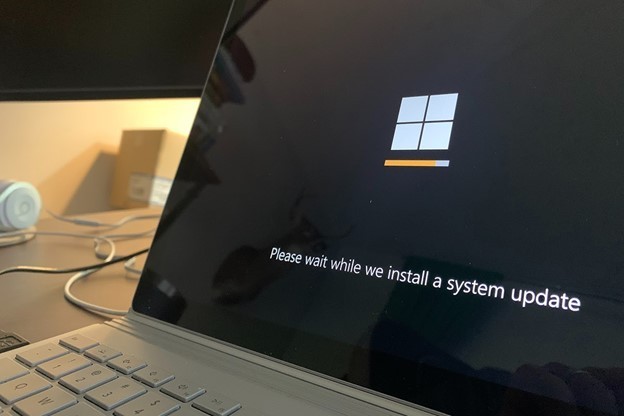Skilled hackers can easily access your system and steal precious business information. Upgrading your cybersecurity can help address this problem.
Taking your cybersecurity seriously is a must. Otherwise, you leave the door open for criminals to compromise your business’s privacy and cause legal troubles.
Now, you might think that cybercriminals only target large companies due to more resources. But that’s not the case.
Whether you’re a small or medium-sized organization, you have a large amount of sensitive data that hackers can utilize. If it ends up in the wrong hands, your reputation can be in shambles, and you may lose access to invaluable information.
The good news is that every business leader can prevent this scenario. And the best way to do so is to take cybersecurity measures to the next level.
This article will share the 13 most effective strategies for making your cybersecurity disaster-proof.
The 13 Strategies
Strategy #1 – Upgrade Cloud Security
Data cloud storage is cost-effective and convenient, but that doesn’t mean you should use just any platform.
Look for the most secure ones that prioritize safety features. Some of your best options include Icedrive, pCloud, and Sync.com.
Strategy #2 – Secure Each Part of Your Network
Mobile devices, computers, and laptops connected to your network can be ideal entry points for hackers. Safeguarding these devices with decisive authentication measures is a great way to prevent cyberattacks.
You can benefit from having strong Wi-Fi and device passwords. They limit access and help ensure only your team members can enter your system.
Here are a few guidelines for creating strong yet convenient passwords:
- Don’t go overboard while mixing letters, symbols, numbers, and upper-case characters. Instead, come up with something simpler, but it should still have a minimum of eight characters.
- Choose something you can easily memorize.
- Never leave your password hints publicly available.
- Reset your passwords whenever you forget them. In addition, change them once a year to keep things fresh.
Strategy #3 – Use Anti-Fraud Services for Card Payments
Seek advice from banks or your payment processor on selecting trustworthy, validated, and anti-fraud services. Besides protecting your information, they can also shield the data of your clients to help preserve your reputation.
Strategy #4 – Incorporate Additional Security Measures
Regardless of the number of your security measures, you can always consider adding more.
Antivirus protection is a must and is the most common tool to combat cyberattacks. It can block malware from compromising your devices and data. Look for programs from reliable providers and only use one antivirus app per device.
Investing in firewall protection is another great idea if you want to safeguard your business against hackers. They can screen out viruses and other harmful activities on the internet and determine the traffic that can enter your devices.
That said, Mac OS X and Windows devices have their own firewalls, named Mac Firewall and Windows Firewall, respectively. But besides your computer, you may also want to set up a firewall on your router to minimize security threats.
Finally, don’t forget about using virtual private networks (VPNs). They can stop web browsers, software, and people from accessing your connection, keeping the data you send and receive anonymous.
Strategy #5 – Don’t Ignore Upgrades and Updates
After receiving notifications that your technological tools need an update, you might consider ignoring it. However, this can be a huge mistake since outdated systems are more susceptible to hacking.
To prevent this, regularly upgrade and update your devices and software. It can bolster their defenses against cyberattacks.
Strategy #6 – Develop Sound Protocols With Your Customers and Suppliers
Securing your communication and data sharing with suppliers and new clients is also paramount. If possible, only use direct contact channels via trustworthy personnel. Moreover, insist on codewords to denote changes in payments, terms, and other key details.
To further lower the risk of data theft through suppliers and clients, vet each person before granting them access to your system.
Strategy #7 – Back Up Your Data
Ransomware attacks are a common form of hacking. It involves cybercriminals holding your business hostage by restricting your access to your data until they receive a ransom.
To eliminate this concern, store your company information on multiple platforms and networks. Backing up your data can prevent your organization from crumbling due to inaccessibility.
Strategy #8 – Only Use Approved Devices and Connections
Remote work is becoming more popular than ever. Although it’s helped enterprises lower costs, it’s also increased security risks. In particular, your employees might be using their own devices or networks that aren’t secure. These are ideal gateways for thieves to steal your information.
You can address this problem by rolling out your company mobile devices and allowing your team members to only work from them.
Strategy #9 – Buy Similar Domains
Purchasing similar domains is an effective way to boost your cybersecurity. It can lower the risk of receiving emails with malicious attachments from spoofed addresses and links to spoofed websites.
Strategy #10 – Train Your Team
A huge number of cyberattacks take place because of employee ignorance. Some employees often click on suspicious emails and fall for phishing schemes or share their passwords without any second thoughts.
Hence, minimizing human error is a must.
Set up phishing campaigns and simulations so you can prepare your team for potential security breaches.
Strategy #11 – Restrict Employee Access
Not all cyberattacks originate from outside your company – they can also come from within.
To reduce the damage someone from your enterprise can inflict with hacking, restrict employee access to only some sections of your system.
Strategy #12 – Foster a Culture of Security in Your Workplace
Cyber security should be the number one priority in all your departments and not just your IT provider. With everyone working together to shield their workplace from attacks, you’re much more likely to preserve your data.
Strategy #13 – Regularly Check for Vulnerabilities
You don’t want to be idle after implementing all these defense mechanisms. Instead, conduct regular audits to identify weaknesses of your business’s cybersecurity. Doing so can help ensure that you patch up your vulnerabilities and upgrade your security system.
Keep Hackers at Bay
Enhancing your cybersecurity is a multifaceted procedure. It encompasses all parts of your system and numerous activities, such as incorporating software and backing up your data.
This makes the process highly complex.
If you need help in ensuring your cybersecurity is as effective as possible, contact us for a quick 10-15-minute, obligation-free chat. Let’s talk about how we can help you improve your cybersecurity and keep threats at bay.
This Article has been Republished with Permission from The Technology Press.



Recent Comments